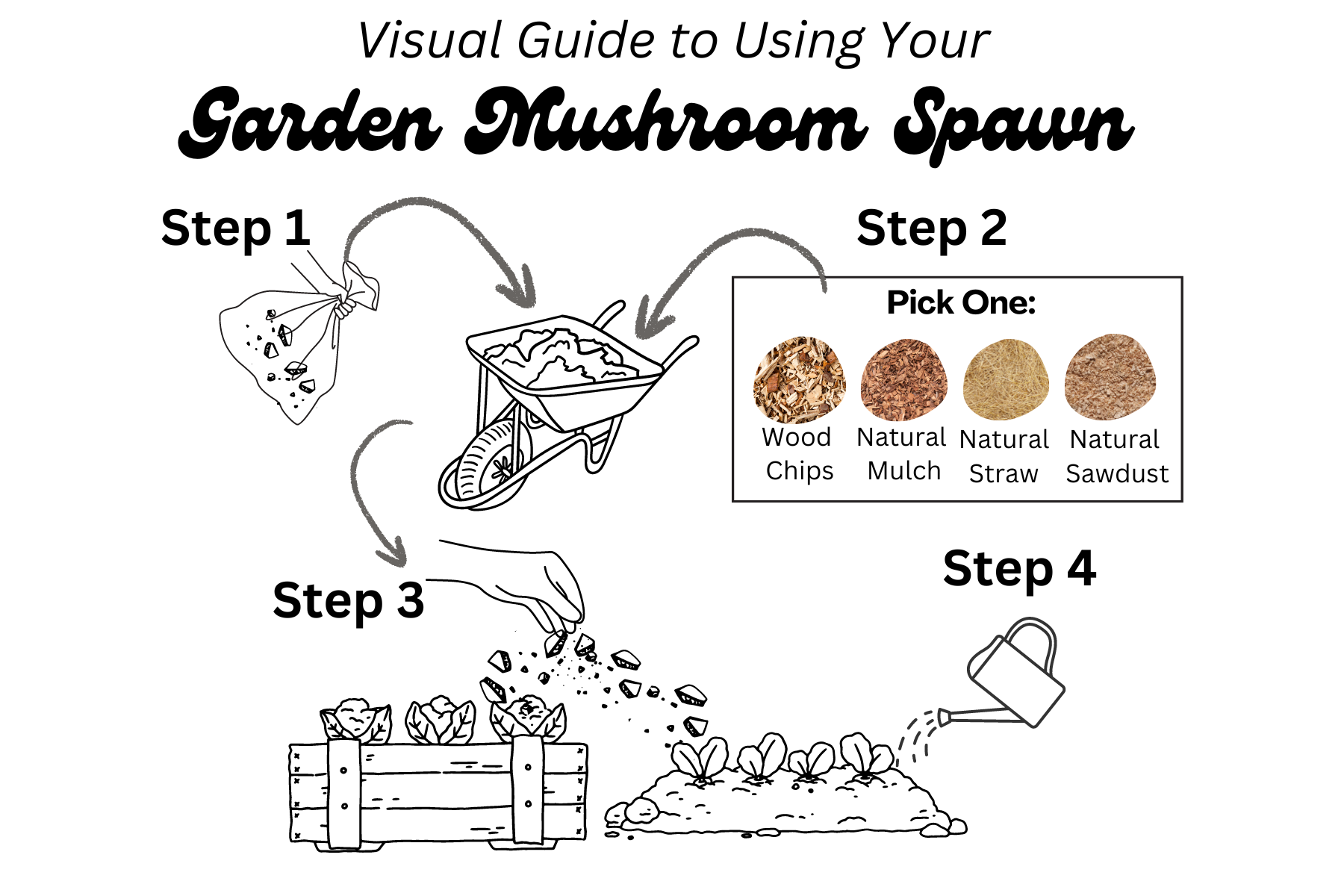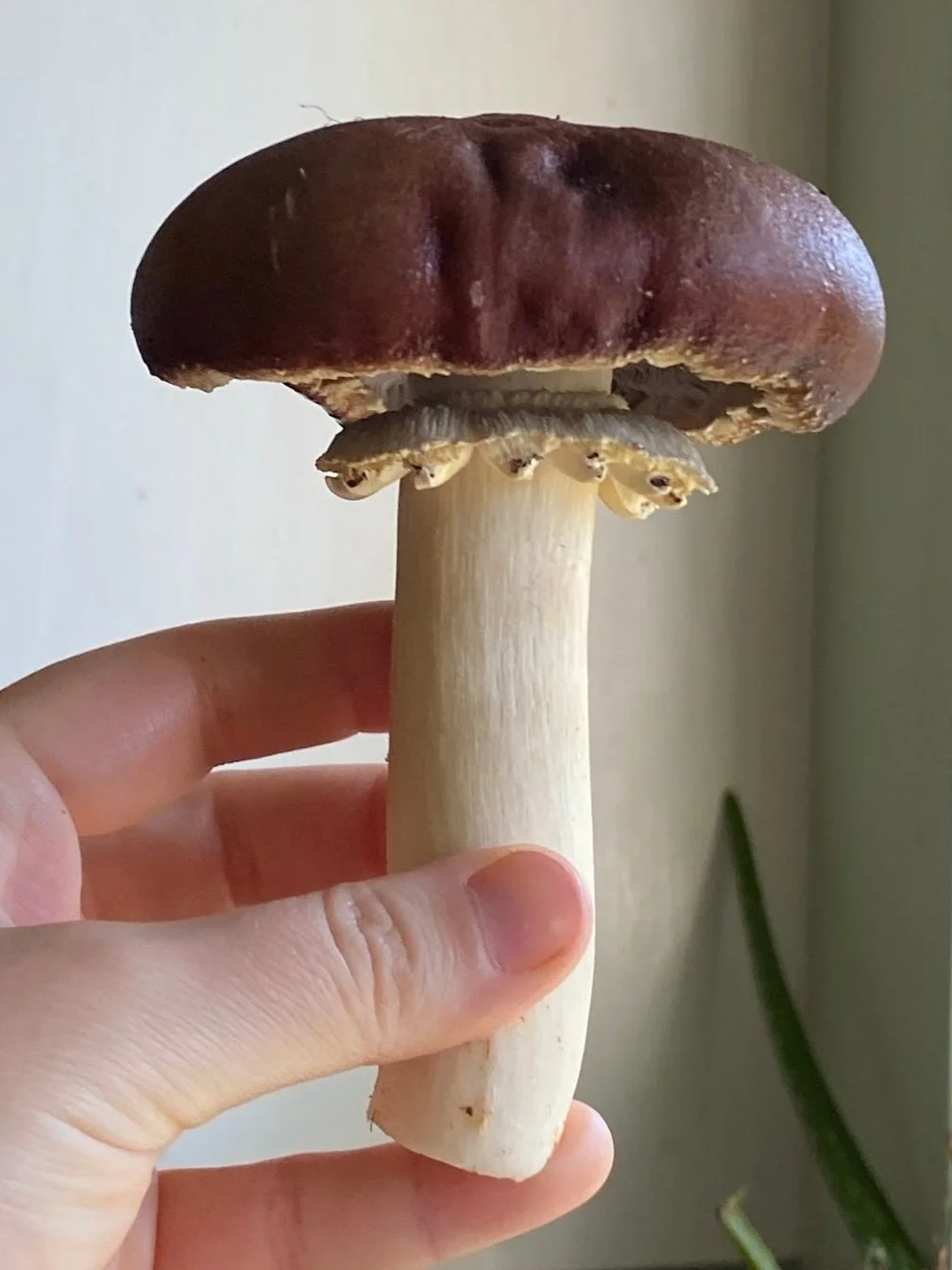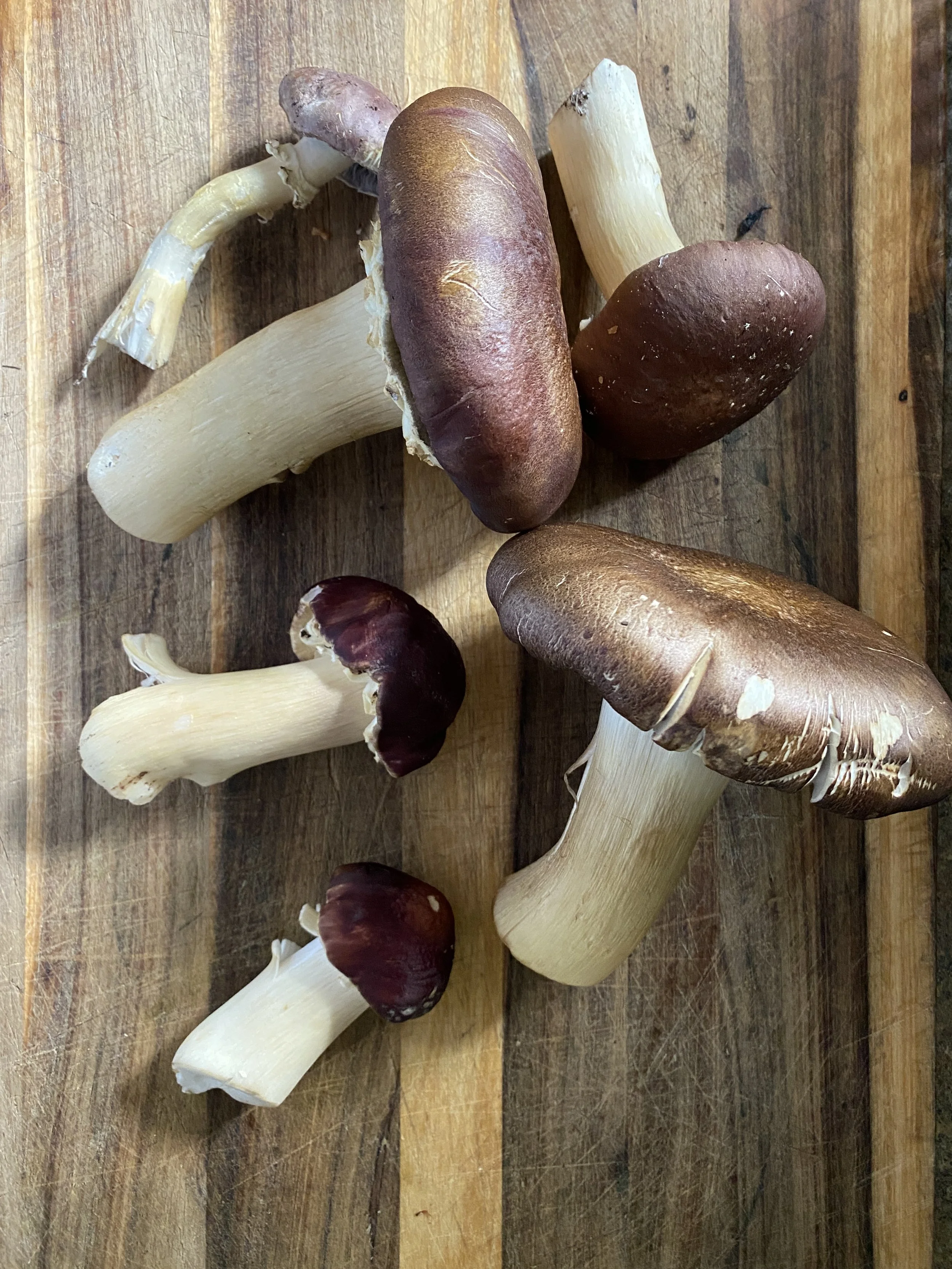Growing Wine Cap Mushrooms in The Garden
Wine cap mushrooms (Stropharia rugoso annulata) are a delicious & unique addition to the garden. Strolling through your vegetable garden or raised beds after a rain to find beautiful, burgundy mushrooms emerging from mulch is a great delight.
Peek a boo! In the early morning, you will likely find wine caps beginning to emerge. they grow fast!
You can choose to let them grow larger. or harvest at the button stage.
Experiment with when you harvest and compare their flavor for fun.
And you’ll never believe how FAST mushrooms can grow into a bountiful harvest.
Wine cap mushroom are tender yet meaty. Rich, burgundy caps top long ivory stems, able reaching impressive height & size. These mushrooms are tender when young, but don't be afraid to let them grow a little larger.
Pro-Tip: Using a sharp knife or scissors, cut the mushroom as close to the ground as possible when the veil has just broken, revealing the crown that the King Stropharia is known for.
Also known as King Stropharia, a crown shape can be seen when you turn the mushroom upside down and look where the veil remnant breaks away from the gills under the cap.
They don’t call them ‘king’ for no reason.
A beautiful wine cap freshly harvest in the morning from our mushroom patch in 2022.
We inoculated an area in our raspberry canes, which produced incredible mushrooms through the season and showed huge impacts on the berry harvest that year (unlike any we had experienced).
Choosing an Ideal Spot
We recommend spots where your wine caps will receive shade and some humidity (important in dry climates). Under taller plants that can provide some cover and help keep moisture around are wise spots. We’ve had great luck under raspberry canes, but any spot that is prepared appropriately and kept moist may produce great wine caps.
Borrowing from the lasagna method, laid down some cardboard first and then plant your substrate/wine cap mixture on top to help prevent weeds from overtaking your wine cap patch.
Pro-Tip: If you have areas with wood chip, mulch piles, or other compost piles, planting your mycelium nearby can benefit the mushroom due to the access to excess nutrients.
Beautiful, fresh harvested wine cap from our home garden. The two large mushrooms weighed more than 5 ounces each! Wine cap are said to have better flavor when harvested young (before the veils break), but are also great to grill or sub for portobello.
Harvest
Spring into late Fall. Leave the stem's "butt" in the bed when harvesting or pull from their spot and trim the butt off. An inoculated patch can produce mushrooms for several years if well cared for.
How to Savor
Small, tender mushrooms are excellent sliced and pan fried in a little butter or coconut oil. Try with scrambled eggs and fresh sourdough. Larger mushrooms are brilliant when smoked, grilled, or baked whole. Enjoy with caramelized onions and garlic mashed potatoes. Use in most recipes that call for mushrooms.
Wine cap mushrooms harvested from our perennial patch. This was its second year and produced literally pounds of mushrooms through the season.
Instructions
1) While bag is sealed, break up the spawn fully & gently by hand.
2) Add crumbled spawn to a wheelbarrow or bucket of wood chips, sawdust, straw, or mulch (non-dyed/natural) & mix together to incorporate.
3) Spread this mix as a top-dressing in your garden, raised bed, or container garden. Shade cover from nearby plants or trees is an optimal location. Avoid full sun.
4) Water twice weekly when weather is dry. Keep moist. If needed, add additional wood chips or straw for good coverage.
Use within 72 hours or refrigerate for up to 1 month. Plant when outside temperatures are 55-75 degrees. Most importantly, keep the bed moist if temps are warmer than 75 degrees. This bag generously inoculates (covers) a 4ft x 4ft area.
Climate Notes
Harsh winters that are very cold or summer droughts can kill wine cap mycelium. Mulch well into the winter.
Avoid long dry spells and keep your patch moist. Your patch should always feel moist while establishing, and we highly recommended to plant your wine cap under other plants (that you already water regularly).
Better to have too much wood chip cover (or straw or saw dust) than not enough).
The best time to plant is in the spring and fall.
Remember to check your patch after rains and temperature swings, which can create ideal temperature conditions.
Always use caution when consuming any mushroom:
Before consuming any mushroom (even those you cultivate in your garden), always be sure to make a confident and positive identification using reliable resources before consuming. Always fully cook home grown or foraged mushrooms.





